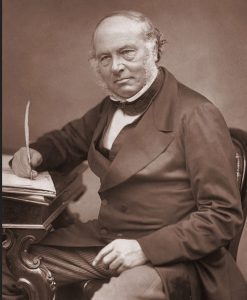In the mid-19th century, the United Kingdom found itself grappling with a postal service that was growing increasingly complex and expensive. Prior to 1840, the cost of sending letters was determined by the distance travelled and the number of pages, making the system both challenging to navigate and often prohibitively costly. It was at this critical juncture that Sir Rowland Hill, a visionary reformer, stepped in with a groundbreaking solution that would forever change the course of British postal history.
The Uniform Penny Post was introduced in 1840
Hill’s proposal, dubbed the Uniform Penny Post, was introduced in 1840. It was a simplified, flat-rate postal system that allowed letters weighing up to half an ounce to be sent anywhere within the UK for a mere penny. This revolutionary idea democratised the postal service, making it more affordable and accessible to the general public. It also marked the advent of the now-iconic Penny Black stamp, which holds the distinction of being the world’s first adhesive postage stamp.
The success of the Uniform Penny Post was undeniable; it led to a remarkable surge in mail volume. This newfound enthusiasm for letter writing and the resultant increase in workload soon highlighted the need for a more organised system to manage the influx of correspondence. The stage was set for the development of a comprehensive and efficient postal addressing scheme – one that would ultimately pave the way for the UK’s modern postcode system.

Sir Rowland Hill
As mail volume grew exponentially, it became apparent that the existing methods of sorting and delivering mail were insufficient. The time-consuming process of sorting letters by hand was no longer sustainable, and a more efficient approach was necessary to keep up with the increasing demand. To address this challenge, the postal service began to experiment with new ways to categorise and organise mail. They sought a system that would not only simplify the sorting process but also ensure that letters reached their intended recipients more quickly and accurately.
This search for a better system led to the introduction of postal districts in London in 1857, which divided the city into separate areas designated by a combination of letters and numbers. This system was later expanded to other major UK cities, including Liverpool and Manchester. While this was a significant improvement, the postal districts still lacked the precision required for an optimally efficient postal service.
It wasn’t until the 20th century that the modern UK postcode system began to take shape. In 1959, the Norwich Experiment, a trial run of a new alphanumeric postal code system, was launched in the city of Norwich. This groundbreaking scheme assigned a unique code to each street or group of houses, ensuring a high degree of accuracy in mail sorting and delivery. The experiment proved to be a resounding success, and the decision was made to roll out the new postcode system across the entire country.
The UK postcode system was a monumental effort
The implementation of the modern UK postcode system was a monumental task, requiring the careful mapping and coding of every street and address in the nation. By 1974, the system had been successfully implemented throughout the UK. The new postcode system not only improved the efficiency of mail sorting and delivery but also provided a valuable tool for planning and administration, as well as for businesses and emergency services.
The story of the UK’s postal system is one of innovation, perseverance, and adaptability. From the introduction of Sir Rowland Hill’s Uniform Penny Post in 1840 to the development of the modern UK postcode system, the nation has consistently sought ways to improve and streamline its postal service. Today, the legacy of the Uniform Penny Post lives on through the accessibility and efficiency of the UK’s postal system, a testament to the vision and determination of those who sought to make communication more affordable and accessible for all.
Image credit: http://www.herberthistory.co.uk/cgi-bin/sitewise.pl?act=big&p=403&id=herbhis
